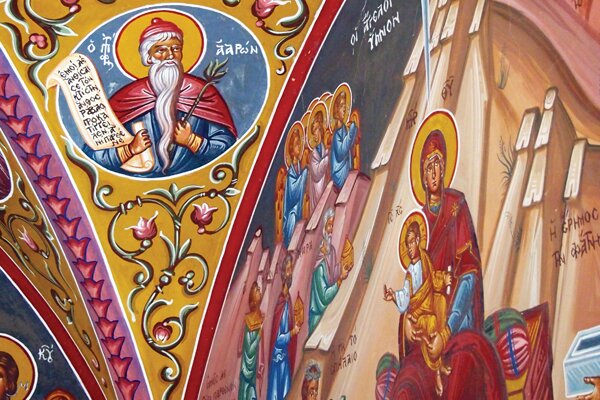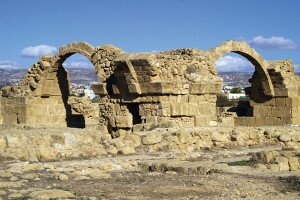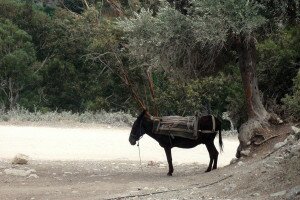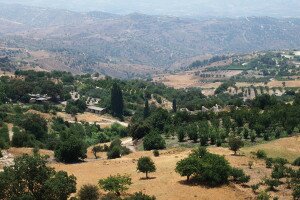The coastal city serves up rich history and an abundance of nature all year round
The region of Pafos sells itself as a ‘good reason for all seasons’ and that it is. Whether you want to explore the area’s rocky coasts during the summer or go up into the mountains during the crisp, sunny winter, there is more than meets the eye in Pafos. The town is part of the official UNESCO list of cultural and natural treasures of the world’s heritage and has recently been selected by the EU as the European Capital of Culture for 2017.
Located on the southwest coast of Cyprus, visitors to Pafos revel in the temperate Mediterranean climate where they can sunbathe year round, explore the area’s natural history and take a peak into its rich past. The island’s summer season runs from April to November, although temperatures in March and December can reach 20°C.
Historical attractions
Following the Ottoman Rule, the once busy city of Pafos declined due to the establishment of Nicosia and Larnaca. After losing many residents to these cities, the district of Pafos remained the most underdeveloped area of Cyprus until 1974, the effects of which are evident in the city’s contrasting infrastructure.
Pafos’ rich history and its many ancient buildings make for popular tourist attractions today. The remains of villas, theatres, fortresses, palaces and tombs from the Classical, Hellensitic and Roman periods offer an insight into the area’s rich architectural and historic past. In Greco-Roman times, Pafos was the capital of Cyprus and is today famous for the remains of the Roman governor’s palace highlighted by its fine mosaics.
The Pafos harbour is home to a handful of attractions including the Kato Pafos Archaeological Park which houses the ‘Tombs of the Kings’ and the ‘Saranta Kolones’, or Forty Columns.
The Kato Pafos Archaeological Park also features the House of Dionysis, which offers a glimpse into a restored Roman villa where mythological characters and creatures are brought to life through impressively preserved mosaics.
Back to nature
True nature enthusiasts will love the unspoilt areas surrounding the Akamas Peninsula National Park. Located at the tip of the western coast, the 230km2 region features some of the finest flora and fauna the island has to offer. The numerous hiking trails, long-distance footpaths and cycling tracks offer visitors a welcome alternative to driving cross-country. The trails are often deserted, which allows for trekkers to better take in the serene surroundings.
Regional operators Cycle in Cyprus offer both recreational and active tours on mountain or road bikes to help you conquer small paved roads and hilly landscapes. The company also offers bikes to rent for independent cyclists. For more information visit: www.cycle-in-cyprus.com
At the tip of the Akamas Peninsula lies The Baths of Aphrodite – another popular attraction on the west coast. Sitting at the end of a short nature trail, the small spring-fed pool is said to be where the Greek goddess of love bathed and later met her lover Adonis when he stopped for a drink. After visiting the pool, head down the opposite hill where you’ll find a secluded rocky beach protected by the cliff faces. There is plenty of sea life waiting for the avid snorkeler, especially for those who venture out to the large rock formation just offshore. While there is a restaurant at the top of the hill, we say pack a picnic and make a day of it.
Pegeia
Just over 15km north of Pafos is the coastal town of Pegeia – or Peyia. Surrounded by water, the location naturally boasts some of the area’s best beaches. Coral Bay is dubbed the ‘jewel of the crown’ due to its calm waters, clean coast and onsite facilities, all of which have won Coral Bay a consistent Blue Flag status. Several vacation companies including Thomson Holidays organise all-inclusive trips to the area.
While Coral Bay welcomes over 2,000 visitors each summer, the nearby Lara Bay sees just half that number, making it a popular spot for families. Also having received the Blue Flag accolade, Lara Bay is still a quiet spot to lounge on a sunbed and enjoy the clear waters.
If you fancy a walk on the seaside, head down to the Sea Caves near Pegeia. Aside from the grounded freighter Edro III, the rocky shore still remains a somewhat unseen attraction. The adventurous visitor can climb over the rocks down to the beautifully clear water and into the caves. While there, grab a snack at Oniro By the Sea, which boasts stunning views of the ocean and fresh fare. While the café fills up during peak season, the owners take occasional holidays during the quiet months.
Accommodation
The centre of Pafos offers a variety of accommodation from luxury beachside resorts to budget friendly self-catering apartments. The Louise King Jason and Mathus Beach Hotel are two highly recommended four-star options within walking distance of the harbour.
Shopping
While you wouldn’t call Pafos a shopper’s paradise, there are a few recognisable stores dispersed amongst rows of independent Cypriot-owned shops. The small island boasts four shopping malls, the newest of which is the Kings Avenue Mall in Pafos. Having opened in November 2013, the modern attraction is still somewhat of a novelty to local residents. You’ll find plenty of western outlets including Zara Home, Tommy Hilfiger, Massimo Dutti, Stradivarius and even Carrefour.
Troodos Mountains
About 90 minutes northeast of Pafos lie the Troodos Mountains. The impressive range stretches across almost all of southwestern Cyrpus. Here you’ll find many quaint villages made up of cobbled streets and traditional architecture, protected cathedrals and a plethora of nature.
During winter, the mountains come alive with city-dwellers eager to get what could be their first glimpse of snow. In the summer, there is an abundance of picnic spots and nature trails throughout the Troodos National Forest Park.
One of the most iconic monuments is the Panagia tou Kykkou (Kykkos Monastery). Built in 1100AD, the religious monument is the most well-known and wealthiest monastery in Cyprus. Visitors can wander the grounds, exploring the colourful murals and ornate carvings before moving into the museum, which houses manuscripts and other Cypriot antiquities. Entrance is free but remember to cover up (robes are provided) and respect the resident monks.
Mount Olympus is the highest point in the Troodos Mountains. The tourist-friendly Troodos Square features a selection of souvenir stalls, restaurants and food carts. Mount Olympus is also home to a four-slope ski resort.
The Troodos Mountains are home to ten UNESCO World Heritage Sites noted for their richly decorated churches and monasteries from the Byzantine Empire. The quaint and traditional areas that surround the sites are just as impressive and unique as the main attraction.
Eating out
Cyprus is known for its healthy Mediterranean diet. 7 St George’s Taverna, a favourite amongst visitors and locals, is a must-visit. The restaurant’s quaint decor is as charming as its staff and feline mascots with garlic ropes, jars of jams, and traditional relics brightening up the wooden interiors. As a rule, if you stick to the restaurants that are busy you won’t be disappointed.
Before you go
As a member of the European Union, Cyprus’ currency is the Euro. Still recovering from the fallout of the Greek government’s debt crisis, most businesses in Cyprus will only accept cash, so be sure to always have some on hand. The official language is Greek but the majority of locals speak English.
While Pafos does have its own international airport, Etihad Airways flies direct from Abu Dhabi to Larnaca. The drive from Larnaca to Pafos is an easy hour and a half drive along the motorway.
Rachael Peacock




















